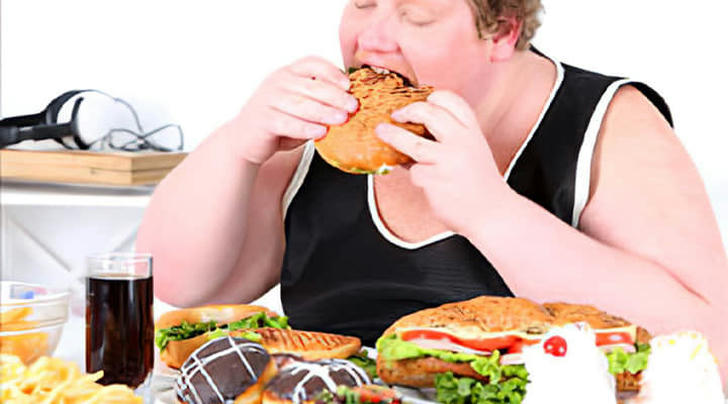Unlocking Emotional Eating: Identify the Triggers and Transform Your Relationship with Food
Emotional eating is a common behavior where individuals eat in response to feelings rather than hunger. This coping mechanism often arises during times of stress, sadness, or anxiety. Understanding emotional eating is crucial for developing healthier coping strategies and fostering a better relationship with food.

Understanding Emotional Eating
Emotional eating, sometimes referred to as stress eating, involves consuming food in response to emotional states rather than physiological hunger. This behavior can manifest during negative emotions such as sadness or stress but can also occur during positive emotions like celebration or happiness. While food may provide temporary relief or comfort, relying on it to cope with emotions can lead to unhealthy eating patterns and potential weight gain over time.
When individuals turn to food for comfort, they may choose high-calorie, sugary, or fatty foods that provide immediate gratification. However, this reliance on food as a coping mechanism often leads to feelings of guilt and shame afterward, creating a cycle that can be difficult to break.
Differentiating Between Physical and Emotional Hunger
To manage emotional eating effectively, it is essential to distinguish between physical hunger and emotional hunger:
• Physical Hunger develops gradually and is accompanied by physical sensations like an empty stomach or growling. It signals the body's need for nourishment and can be satisfied with any type of food.
• Emotional Hunger, on the other hand, arises suddenly and often craves specific comfort foods. It is driven by emotions rather than a physiological need and does not lead to true satisfaction; instead, it often results in overeating.

Recognizing these differences allows individuals to respond more appropriately to their cravings. A helpful strategy is to pause before reaching for food and ask oneself whether they are truly hungry or if they are seeking comfort from their emotions.
Triggers of Emotional Eating
1.Stress: Life events such as job loss, relationship issues, or health concerns can prompt individuals to seek solace in food. Stress activates the brain's reward system, reinforcing the behavior and creating a cycle that is difficult to break.
2.Negative Emotions: Feelings of sadness, loneliness, or anxiety often lead people to turn to food for comfort. In these moments, eating may feel like a way to escape from unpleasant feelings.
3.Boredom: In moments of inactivity or lack of stimulation, individuals may use food as a distraction or source of entertainment. Eating while watching television or scrolling through social media can become habitual.
4.Social Situations: Eating in social settings can enhance enjoyment but may also lead to overeating due to peer pressure or habit. Celebrations often revolve around food, making it easy to lose track of portion sizes.

Solutions for Managing Emotional Eating
Fortunately, there are several strategies that can help individuals manage emotional eating:
1.Cognitive-Behavioral Therapy (CBT): CBT is an effective approach that helps individuals identify and change unhealthy eating patterns by addressing the thoughts and feelings that lead to emotional eating. It encourages self-reflection and promotes healthier coping mechanisms by teaching individuals how to respond differently to their emotions.
2.Mindfulness Practices: Mindfulness techniques such as meditation and yoga enhance awareness of thoughts and feelings without judgment. Mindful eating—where one pays full attention to the experience of eating—can help individuals recognize when they are truly hungry versus when they are eating for emotional reasons.
3.Stress Management Techniques: Engaging in activities such as deep breathing exercises, physical exercise, or hobbies can alleviate stress levels and reduce the likelihood of turning to food for relief. Regular physical activity not only improves mood through the release of endorphins but also provides an alternative outlet for managing emotions.
4.Developing Alternative Coping Mechanisms: Creating strategies for coping with negative emotions that do not rely solely on food is crucial. Engaging in hobbies—such as painting, gardening, or playing an instrument—can provide a productive distraction from negative feelings. Additionally, talking about feelings with friends or family members can offer support and reduce feelings of isolation.
5.Support Groups or Counseling: Seeking support from groups or professionals offers valuable resources for those struggling with emotional eating. Support groups provide a sense of community where individuals can share their experiences and learn from others facing similar challenges. Counseling with a registered dietitian or therapist can provide personalized guidance in developing healthier habits.
Conclusion
Emotional eating is influenced by various factors including stress, loneliness, and societal pressures. By understanding its triggers and learning to differentiate between physical and emotional hunger, individuals can take proactive steps toward managing their relationship with food more effectively. Implementing strategies such as cognitive-behavioral therapy, mindfulness practices, stress management techniques, and developing alternative coping mechanisms can significantly reduce the likelihood of turning to food for comfort.

Recognizing that food serves both as fuel for our bodies and a source of comfort empowers us to make choices that support our physical health and emotional resilience. By addressing the underlying emotions that drive us to eat emotionally, we can cultivate a healthier relationship with food that promotes overall well-being.
This comprehensive understanding not only aids in managing emotional eating but also enhances overall mental health by encouraging healthier coping mechanisms that contribute positively to one's quality of life.
